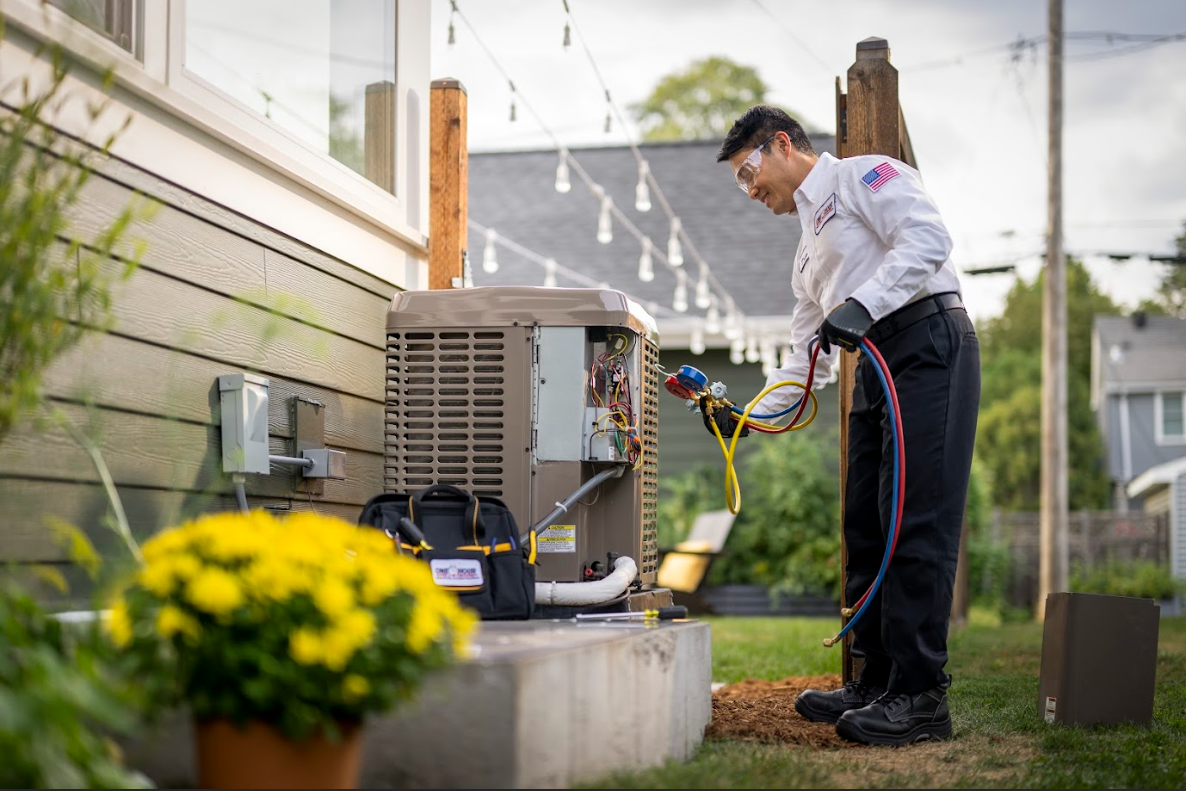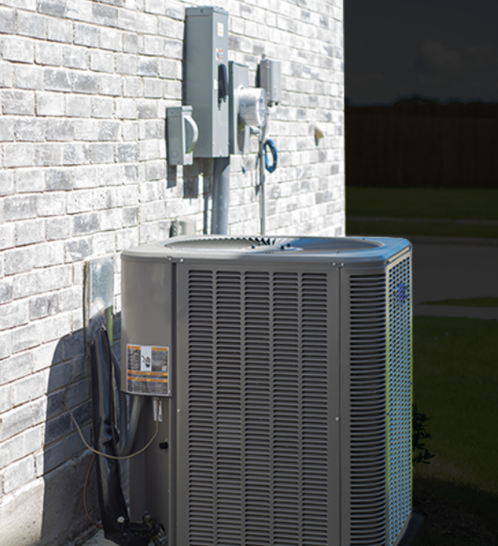
How to get your HVAC ready for the next season
Ogden does not ease into new weather. A warm snap can turn into a canyon wind overnight, and spring pollen gives way to summer heat fast. A home in Ogden, Washington Terrace, or South Weber needs a heating and cooling system that handles sharp shifts without wasting energy or breaking down. Preparing the HVAC now protects comfort later, trims utility bills, and reduces the chance of an urgent repair on a weekend.
This playbook comes from years of servicing systems across Weber County. It breaks down what matters by season, where homeowners can make an immediate impact, and when to call a pro. It also reflects common issues seen in HVAC Ogden service calls: clogged filters after windstorms, iced heat pumps on January mornings, and air conditioners short-cycling after an early June heatwave.
Start with the basics: air, power, and drainage
Every reliable system moves air freely, gets stable power, and drains water the right way. Before changing modes for the season, confirm three simple items.
- Replace the air filter and set a reminder every 30 to 60 days in summer, 60 to 90 days in winter. Homes near Harrison Boulevard or 12th Street see more road dust; shorten the interval.
- Clear and test the condensate path. Pour a cup of warm water with a splash of white vinegar into the indoor drain line. Watch for steady flow near the condensate pump or floor drain.
- Check breakers and the outdoor disconnect. After roof work or yard projects, disconnects get bumped. Reset tripped breakers once. If they trip again, stop and call for service.
These three actions solve many “no cool” or “no heat” calls before the truck rolls.

Spring checklist before cooling season
Pollen, cottonwood fluff, and lawn work load coils and filters quickly. A quick tune-up in March or April helps an AC or heat pump run strong once temperatures hit the 80s in Ogden and Roy.
Clean the outdoor unit. Turn off power at the disconnect, remove leaves and debris by hand, and rinse the coil from the inside out with a garden hose on gentle pressure. Avoid high pressure that bends fins. Keep a clear space of at least two feet around the unit. Boxwood hedges and bikes count as obstructions.
Inspect the refrigerant lines. The larger copper line should have intact insulation from the wall to the condenser. Sun-baked foam near Riverdale Road often splits. Replace split sections to reduce energy loss and prevent condensation drips.
Test thermostat cooling early. Set the thermostat to cool and drop the setpoint by three degrees. Let it run for 10 to 15 minutes. Supply air should feel at least 15 to 20 degrees cooler than return air. If rooms cool unevenly, walk the supply registers and returns. Open or close dampers a quarter turn at a time and recheck. Avoid closing more than 20% of registers; it raises static pressure and can cause coil freeze-up.
Mind the attic and ducts. Attic temperatures in Ogden can reach 120 to 140°F by June. Thin or displaced insulation over supply trunks adds load to the AC. If the ducts were taped years ago, expect dried-out tape and leaks. A smoke pencil or even a tissue test near joints can reveal air leaks. Seal with mastic, not cloth duct tape.
Schedule a professional AC tune-up. A licensed tech will check refrigerant charge, clean the evaporator coil, test capacitors https://www.onehourheatandair.com/ogden and contactors, verify temperature split, and measure static pressure. Homeowners sometimes clean the outdoor coil and forget the indoor coil, which hides behind panels and needs proper cleaning to restore airflow.
Summer habits that protect performance
Set the thermostat and leave it. Short changes lead to short cycling, which is hard on compressors. Use a 2 to 3-degree set-and-hold strategy during peak hours. In older Ogden bungalows with minimal insulation, add a smart schedule that pre-cools in the morning and eases off in the afternoon.
Use bathroom and kitchen exhaust fans. A 10-minute run after showers and cooking drops humidity. Lower indoor humidity reduces AC runtime and helps avoid that sticky feeling without overcooling.
Rinse the condenser after yard work. Grass clippings can blanket the coil in seconds. A quick rinse keeps pressures normal and energy use lower.
Watch for icing. If the indoor coil ices and airflow drops, turn the system to fan only for an hour, replace the filter, and then test again. If icing returns, the system needs a service call to check airflow and refrigerant levels.
Fall steps before heating season
Once night temperatures drop below 50°F in Ogden Canyon and the Ben Lomond foothills, it is time to pivot to heating.

Test run the furnace or heat pump on a mild day. A slight burning smell for the first 5 to 10 minutes is common as dust burns off the heat exchanger or strips. Anything smoky, persistent, or accompanied by noise needs attention.
Vacuum returns and supply registers. Dust buildup acts like a felt blanket, raises static pressure, and causes blower motors to run harder. Pull floor registers and wipe the first few feet of ducting with a damp cloth.
Check the flame sensor and igniter age. Most hot surface igniters last 4 to 7 years. Homeowners with a service history can ask the tech to replace a weak igniter during fall maintenance to avoid a no-heat call in January. A dirty flame sensor causes intermittent shutdowns; cleaning is part of a proper tune-up.
Install fresh carbon monoxide detectors. Place one near bedrooms and one near the mechanical room. Replace batteries at daylight saving time changes. If a detector ever alarms, ventilate and call for service immediately.
Schedule a heating tune-up. The visit should include combustion analysis on gas furnaces, heat exchanger inspection, blower wheel cleaning, gas pressure checks, and verification of temperature rise. For heat pumps, a tech will confirm defrost settings and backup heat operation.
Winter watchpoints during deep cold snaps
Ogden sees single-digit mornings most winters, and winds through the Avenues can push wind chill even lower. These conditions expose weak spots in both gas furnaces and heat pumps.
Do not throttle supply vents to “push heat” elsewhere. This raises static pressure and can trip high-limit switches. Keep doors open for rooms without returns to balance airflow.
Keep snow and ice off heat pump outdoor units. Build a simple awning with proper clearance or brush snow away after storms. If the outdoor unit is encased in ice, turn the system off and call for service. Do not chip at the coil.
Expect longer runtimes. A heat pump will run almost continuously near design temperature. If the home holds the setpoint and the outdoor fan turns freely, the system is likely fine. Sudden jumps in bill amounts often trace back to a stuck electric backup heat; a technician can confirm staging.
Check condensate drains on high-efficiency furnaces. Drains can freeze where the line passes a cold crawlspace. Insulate exposed sections and add gentle heat cable if needed.
Indoor air quality that also protects the system
A clean system lasts longer. Ogden’s spring pollen, summer dust, and winter inversion days load filters fast. Upgrading filtration can improve health and lower maintenance.
Choose a MERV rating that fits the blower. Most residential systems handle MERV 8 to 11 without issue. MERV 13 provides finer capture but can restrict airflow if the return is undersized. A static pressure test during maintenance confirms the safe range.
Add a dedicated return in closed-off rooms. Older East Bench homes often rely on undercut doors. If a room runs hot or cold, a jumper duct or transfer grille can balance the pressure without tearing up walls.
Control humidity. Aim for 30 to 50% indoor humidity. In winter, a well-set humidifier reduces dry skin and static while allowing a lower heat setpoint to feel comfortable. In summer, a whole-home dehumidifier eases the AC load and evens out temps in basements near the Ogden River.
Signs it is time to call a pro
Homeowners can handle filters, basic cleaning, and simple tests. Certain symptoms point to deeper issues that need proper tools and training.
- Repeated breaker trips or burning odors
- Ice on the indoor coil or outdoor lines after a filter change
- Uneven rooms after registers and returns are open and clear
- Hearing the outdoor fan but feeling warm air in cooling mode
- Short cycling: runs for under five minutes, shuts off, and restarts frequently
A technician will measure superheat and subcooling, read static pressure, test voltage drop, and check gas pressures or defrost controls. That data prevents guesswork and catches small problems before they become big ones.
Ogden-specific tips that save money
Shade west-facing windows in Farr West and Pleasant View to cut afternoon heat load. Simple solar screens can drop room temps by several degrees.
Seal the rim joist. Many North Ogden homes leak air where the foundation meets framing. A can of foam and some patience can cut drafts and help both heating and cooling.
Mind swamp cooler transitions. If a home has a retired evaporative cooler, make sure the roof duct is capped and sealed. An open damper wastes conditioned air year-round.
Consider surge protection. Summer lightning and winter grid events both spike voltage. A whole-home surge protector and a condenser-specific device protect boards and compressors that are expensive to replace.
What a professional seasonal tune-up includes
A strong HVAC Ogden maintenance visit is more than a quick rinse and a filter swap. Expect these core tasks:
- Measure temperature split and total external static pressure, then compare to equipment specs
- Clean condenser and, if needed, evaporator coils; clean blower wheel if dust load is high
- Test capacitors, contactor, inducer, and blower amps against nameplate ratings
- Verify refrigerant charge using superheat or subcooling methods appropriate to the metering device
- For furnaces, run combustion analysis and inspect the heat exchanger for cracks or hotspots
Homeowners who schedule in shoulder months get quicker appointments and better pricing than peak heat or cold days.
Ready for the next season? One Hour makes it easy
If the system has a few years on it, a seasonal check is money well spent. One Hour Heating & Air Conditioning serves Ogden, South Ogden, North Ogden, Riverdale, Roy, and nearby neighborhoods with same-day appointments when possible. The team shows up on time, explains findings in plain terms, and gives clear options with up-front pricing. Many repairs, such as capacitor or igniter replacements, are completed in a single visit.
Call to schedule a seasonal tune-up, book a repair, or ask about a maintenance plan that covers both heating and cooling checks. A clean, measured, verified system handles Ogden’s swings without drama and keeps utility bills in line.
One Hour Heating & Air Conditioning provides trusted furnace repair in Ogden, UT and full-service HVAC solutions for homes and businesses. Family-owned and operated by Matt and Sarah McFarland, our company is built on honesty, hard work, and quality service—values passed down from Matt’s experience on McFarland Family Farms, known across Utah for its sweet corn. As part of a national network founded in 2002, we bring reliable heating and cooling care backed by professional training and local dedication.
Our licensed technicians handle furnace and AC installation, repair, and maintenance, heat pumps, ductless mini-splits, thermostat upgrades, air purification, indoor air quality testing, humidifiers, dehumidifiers, duct cleaning, zoning systems, and energy-efficient replacements. We stand by a 100% satisfaction guarantee through the UWIN® program and provide honest recommendations to help Ogden homeowners stay comfortable year-round.
Call today for dependable service that combines national standards with a personal, local touch.
One Hour Heating & Air Conditioning
1501 W 2650 S #103 Phone: (801) 405-9435 Website: https://www.onehourheatandair.com/ogden
Ogden,
UT
84401,
USA